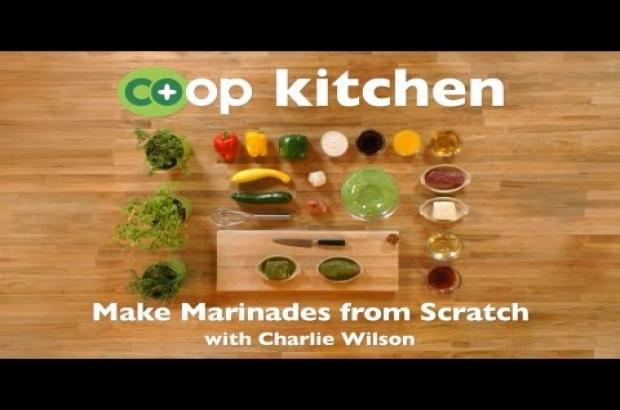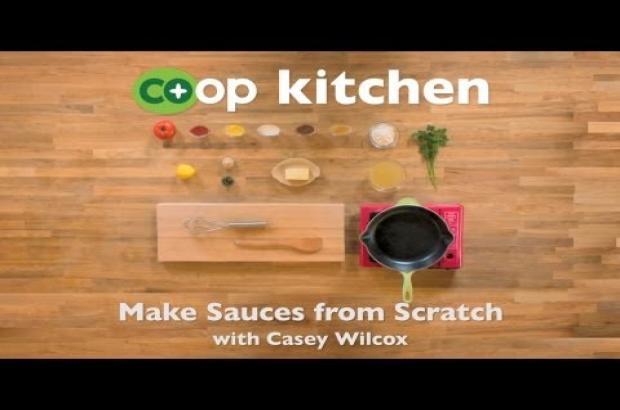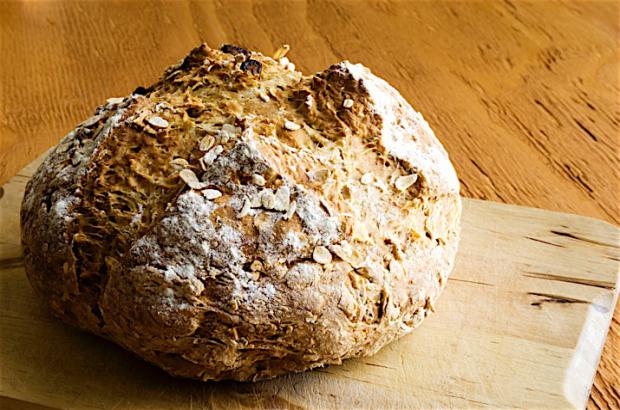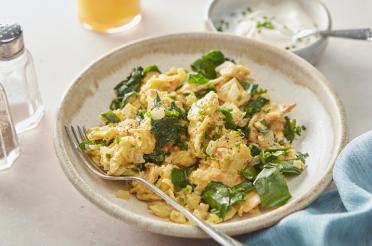Make Dressings from Scratch: Basics of Emulsification
Making dressings from scratch is simple once you understand the basic principles of emulsification. Emulsification is the combination of two liquids that don’t usually mix, like oil and vinegar. Casey Wilcox demonstrates three different methods of emulsification while making three salad dressings.
Find more Co+op Kitchen videos featuring information and easy recipes for making delicious meals at home, as well as handy hints from chefs and food enthusiasts who love sharing their passion for great food.
Video Transcript
Hi. I'm Casey Wilcox, the executive chef of Justine's in Austin, Texas. And today we're going to talk about how easy it is to make dressings from scratch once you learn the properties of emulsification.
Three methods of emulsification
Today we're going to use three methods to illustrate the combination of oil and vinegar.
1. Matter method
The first method that we'll do is what I call a matter method. We're going to start with some vinegar. And then to make this vinegar thicker, thick enough to hold onto the oil, we're going to add jalapeño, some peeled ginger and some shallot. And now when I puree this, we're essentially making the vinegar thick enough, viscous enough, to hold onto that oil.
And I have a little trick to keep your kitchen clean when you're making small amounts of dressing. I like to put a piece of plastic wrap over the top of the blender and then poke a hole in it so that we can add the oil slowly through the hole, but the plastic wrap protects from things flying all over your kitchen.
So we add the oil slowly to give that thickened liquid a chance to kind of grab on to the oil a little bit at a time and hold onto it and keep it in an emulsified state.
So, let's take a look at what that looks like. We have a dressing where the oil and the vinegar are combined together to make a thicker, smooth sauce.
2. Using an emulsifying agent
The next thing that we'll talk about is using an emulsifying agent. The most commonly used ones are egg yolks and mustard, because they both contain lecithin.
Okay, so we'll start this dressing with a little bit of vinegar, salt, and the egg yolks. And for this recipe, we're going to add lemon juice. The vinegar and the acid and salt help to cook the egg yolks as we whip, so that they become stiffer to hold onto the oil better.
So now we'll whip. We'll whip this mixture until it thickens and stiffens.
Now that the egg yolks are thicker and lighter, we're going to slowly start adding the oil. Same method again. A little bit at a time so that the vinegar has a chance to grab onto that oil.
So, what we have now is we have a dressing that has almost the consistency of mayonnaise. It's a little thick and oily, so what we can do to lighten this up is to add a little bit of water. If we added the water in the beginning, when we added the vinegar, then we'd end up with that mayonnaise dressing in the end regardless. So now we're thinning out the emulsification, which is lightening the color and lightening the mouth feel.
3. Emulsifying with heat
The next method we'll talk about is using heat to make an emulsification that otherwise wouldn't happen.
So, in this case, we use vinegar, and for the oil we use bacon fat because of its flavor.
So we'll cut it into smaller pieces to help get the fat out, and we'll put it in a cold pan to start because that's an easier way to get the fat out as opposed to burning the bacon first.
As we let this cook, we'll move onto the vinegar portion, in this case apple cider vinegar.
And we'll use sugar to make what's called a gastrique, which will be basically almost like a vinegar syrup. And that will be the thickness to help hold onto the fat that we make. And we're going to let this half cup or so reduce down to just a little bit more than a tablespoon.
All right, so once we got most of the fat rendered off the bacon, we're left with some crispy bacon that we can reserve for our salad or for another use.
And now that the vinegar is reducing, now we're at a point where this vinegar will be able to hold onto this bacon fat.
So it's the same method. We're just going to add the fat just a little bit at a time.
This dressing won't hold as it gets cold. It will also break if it gets too hot. But while we keep it warm, it's emulsified.
These are three of the most common ways to emulsify salad dressings. And once you understand the concept of how the oil and the water bind together through these methods, it's easy to make dressings for yourself from scratch.
I'm Casey Wilcox for Co+op, stronger together.













